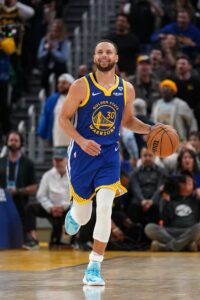After acquiring CJ McCollum at the 2022 trade deadline, the Pelicans had long hoped for an extended period to evaluate what their roster looked like when fully healthy. They didn’t get it during the 2021/22 season, with Zion Williamson unavailable all year, including for the team’s first-round playoff loss to Phoenix. And they didn’t get it in ’22/23, when injuries limited Williamson to 29 games and Brandon Ingram to 45.
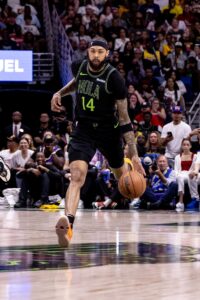 The Pelicans didn’t entirely avoid health issues in ’23/24, but they came about as close as they could realistically expect, with Williamson, Ingram, and McCollum each playing between 64 and 70 regular season games. A late-season knee injury limited Ingram’s effectiveness in the playoffs, and Williamson hurt his hamstring in the play-in tournament, sidelining him for the first-round series vs. the Thunder, but by that point, the Pelicans had gotten the extended evaluation period they’d hoped for, giving them a better idea of what they had.
The Pelicans didn’t entirely avoid health issues in ’23/24, but they came about as close as they could realistically expect, with Williamson, Ingram, and McCollum each playing between 64 and 70 regular season games. A late-season knee injury limited Ingram’s effectiveness in the playoffs, and Williamson hurt his hamstring in the play-in tournament, sidelining him for the first-round series vs. the Thunder, but by that point, the Pelicans had gotten the extended evaluation period they’d hoped for, giving them a better idea of what they had.
So what was the verdict? Here’s what head of basketball operations David Griffin had to say in April at the end of New Orleans’ season:
“In the past, we’ve always erred on the side of continuity, and our takeaway has always been, ‘Let’s see this group healthy.’ I think we’ve seen it enough. I think we had a really, really good opportunity to see Zion play a career high in games. I think we saw it for segments of time well enough to understand that we’ve got a lot of work to do. Because it is a historically good Western Conference, there are teams that didn’t make the playoffs that are going to get radically better this offseason. We need to do the same. I think you’ll see a real sense of urgency from all of us to do that.
“… I want to be really, really clear. This is not going to be a summer of complacency. It’s time to get better.”
It’s an encouraging stance from Griffin, who could’ve lauded the Pelicans for their 49-33 regular season record, which was a seven-game improvement over the prior season and tied for the second-best record in franchise history. He could’ve used Ingram’s and Williamson’s late-season injuries as excuses for the lack of playoff success. But he (rightly) recognized that the current roster isn’t good enough to beat the very best teams in the West and that some changes are needed.
Fortunately for the Pelicans, they’re in a pretty good position to make those changes. The roster is chock full of tradable contracts and the club has an excess of future first-round draft picks — in addition to holding all their own future first-rounders, the Pels control the Lakers’ unprotected pick in 2025 and Milwaukee’s unprotected pick in 2027, as well as the right to swap first-rounders with the Bucks in 2026.
That’s not to say that the right moves are obvious or that upgrades will be easy, but the Pelicans are better positioned than some of their conference rivals to further bolster an already-strong roster this summer.
The Pelicans’ Offseason Plan
The Pelicans don’t necessarily have to make a move involving one of their three highest-paid players this summer, but there’s reason to believe they’ll seriously consider it. Williamson isn’t going anywhere and McCollum is probably more valuable to New Orleans than he would be on the trade market, but Ingram’s future with the franchise is far from certain.
The 2024/25 season will be the last of Ingram’s five-year, maximum-salary contract with the Pelicans, and reports have indicated the front office isn’t comfortable with the idea of offering the star forward a max extension that would start at 30% of the cap (rather than 25%, like his previous deal).
Ingram has had five good seasons in New Orleans, but his game has plateaued to some extent since he made the All-Star team and earned Most Improved Player honors in 2020, and his three-point shooting has taken a step back. After making 38.6% of 6.2 three-pointers per game in his first two seasons with the Pelicans, the 26-year-old has knocked down just 35.4% of 3.9 tries per night in the past three seasons.
Those numbers are important, because with multiple non-shooters on the floor – Williamson and a center such as Jonas Valanciunas or Larry Nance – the team needs its other players to regularly take and make those outside shots to properly space the floor. If Ingram can’t reliably do that, the Pelicans will be hesitant to make another huge financial commitment to him, so he could find himself on the trade block in the coming weeks.
While there are a number of teams around the NBA who could benefit from Ingram’s skill set, it’s hard to envision a more ideal trade partner than Griffin’s former club, the Cavaliers, who will have to consider this offseason whether to move forward with overlapping pieces in both their backcourt (Donovan Mitchell and Darius Garland) and frontcourt (Jarrett Allen and Evan Mobley). Conveniently, Cleveland could use a big scoring wing, while two of the Pelicans’ biggest needs are a true point guard and a rim-protecting center.
The Pelicans have long had interest in Allen, having been linked to him during multiple previous transaction windows, and I think Garland would be a pretty good fit in New Orleans too. McCollum has been the team’s de facto point guard in recent years, but he’s not a natural distributor — both Williamson and Ingram averaged more assists per game than he did last season.
It remains to be seen just how open the Cavaliers will be to negotiating a deal with New Orleans. While the two teams look like an obvious match to me, Cleveland’s head of basketball operations Koby Altman has resisted the idea that a shake-up is necessary, telling reporters last month that he doesn’t anticipate “sweeping changes” to his roster this summer. We’ll see if he sticks to that stance.
As logical as a trade centered around Ingram and Allen would be from the Pelicans’ perspective, they’ll need to consider alternatives at the five if the Cavs aren’t open to a deal. Center is a greater priority than a point guard, where Williamson and McCollum can share ball-handling duties if need be. Williamson is an effective small-ball center in certain lineups, as is Nance, but rim protection isn’t either player’s specialty and New Orleans needs a bigger body to match up with the top centers in the Western Conference.
Valanciunas, who is headed to free agency, has his strengths – he’s an excellent interior scorer and rebounder – but those strengths don’t necessarily match up with the Pelicans’ needs, which means it’s very possible he won’t be back in New Orleans next season. Still, it will be tricky for the club to land a capable replacement, given its lack of cap room and a relative dearth of quality of big men on the free agent market.
Nic Claxton or Isaiah Hartenstein would be great, but the Pelicans have no feasible path to acquiring either of them. Goga Bitadze, Andre Drummond, and Mason Plumlee are among the other possible free agent fits, but they don’t inspire a whole lot of excitement. The club may have to rely on the trade market to acquire a starting-caliber five. While Allen will once again be at the top of New Orleans’ wish list, the club figures to kick the tires on several other veteran centers who might be available, including perhaps Clint Capela, Mitchell Robinson, Wendell Carter, and Robert Williams.
Ingram wouldn’t be the most logical centerpiece in a deal for some of those non-Allen centers, so the Pelicans will likely have to consider sending out Nance in certain scenarios. He’s a solid contributor, but he’ll be on an expiring $11.2MM contract and will be the only Pelican besides Williamson, Ingram, McCollumn, and Herbert Jones ($13MM) making more than about $6MM next season.
Jones – who made the All-Defensive First Team, improved his three-point percentage to 41.8%, and is under contract for three more seasons – is a long-term keeper, leaving Nance as the most logical salary-matching piece in a mid-sized deal that doesn’t involve Ingram.
Whether or not Ingram is traded, the Pelicans will want to find a way to get young sharpshooters Trey Murphy and Jordan Hawkins more playing time. Murphy, who averaged a career-high 14.8 points per game and is a career 39.2% three-point shooter, appears on the verge of a true breakout and is an ideal complement to Williamson, given his ability to space the floor. Moving Ingram could clear a path for the fourth-year sharpshooter to move into the starting lineup on a permanent basis (he started 23 of 57 games last season) while also creating the cap flexibility to comfortably lock him up long-term.
Murphy will be eligible for a rookie scale extension this offseason and I expect the Pelicans will be motivated to work out a deal sooner rather than later, since his value will likely only to continue to rise as he takes on a greater role. I wouldn’t necessarily expect Murphy to match or exceed the five-year, $135MM extension Devin Vassell signed last fall, but a payday in the range of $20-25MM per year is realistic. A new deal for Murphy would begin in 2025/26, just as Ingram’s current contract expires.
As for Hawkins, last year’s 14th overall pick didn’t have a significant role as a rookie but acquitted himself reasonably well when he played, converting 36.6% of his three-pointers. He’ll need to become more of a threat inside the arc and work on his defense, but Hawkins looks like a rotation piece going forward and will be on a team-friendly contract for three more seasons.
Naji Marshall is an underrated three-and-D wing who has been a bargain on a minimum-salary contract for the Pelicans since the 2020/21 season and offered a reminder of his value this spring when he averaged more minutes per game in the play-win over Sacramento and the first-round series vs. Oklahoma City than he did during the regular season. He’s due for a raise as an unrestricted free agent though, and with New Orleans starting to face a cap crunch and looking to find more minutes for Murphy and Hawkins, Marshall could be the odd man out. The Pels would certainly welcome him back if the price is right, but I expect the 26-year-old to draw mid-level interest in free agency.
Jose Alvarado‘s contract situation will also be worth keeping an eye on this summer. The Pelicans hold an affordable $2MM team option on Alvarado for next season, but picking it up isn’t a no-brainer, since doing so would put the guard on track for unrestricted free agency in 2025. Turning down the option would allow New Orleans to control Alvarado’s restricted free agency, ensuring that he doesn’t go anywhere, even if it would mean paying him more in 2024/25.
This decision could go either way, but my guess is that the team will simply exercise Alvarado’s option, locking in his $2MM salary. That will put the Pelicans in better position to navigate the cap in ’24/25, and they could still negotiate a possible extension with Alvarado during the season. While it would increase the risk of him getting away a year from now, he’s not such a crucial part of the long-term plans that New Orleans can’t take that risk, especially if former lottery pick Dyson Daniels continues to develop into a more consistent two-way threat in the backcourt.
Salary Cap Situation
Guaranteed Salary
 Zion Williamson ($36,725,670)
Zion Williamson ($36,725,670)- Brandon Ingram ($36,016,200)
- CJ McCollum ($33,333,333)
- Herbert Jones ($12,976,362)
- Larry Nance Jr. ($11,205,000)
- Dyson Daniels ($6,059,520)
- Trey Murphy ($5,159,854)
- Jordan Hawkins ($4,525,680)
- E.J. Liddell ($2,120,693)
- Total: $148,122,312
Non-Guaranteed Salary
Dead/Retained Salary
Player Options
Team Options
Restricted Free Agents
Two-Way Free Agents
Note: Because he has finished each of the past two seasons on a two-way contract with the Pelicans, Seabron’s qualifying offer would be worth his minimum salary (projected to be $2,093,637). That offer would include a small partial guarantee.
Draft Picks
- No. 21 overall pick ($3,202,560 cap hold)
- Total (cap holds): $3,202,560
Extension-Eligible Players
- Jose Alvarado (veteran)
- Extension-eligible until June 30 (or beyond, if his team option is exercised).
- Brandon Ingram (veteran)
- Naji Marshall (veteran)
- Extension-eligible until June 30.
- CJ McCollum (veteran)
- Extension-eligible as of September 26.
- Trey Murphy (rookie scale)
- Larry Nance Jr. (veteran)
- Extension-eligible as of October 1.
- Jonas Valanciunas (veteran)
- Extension-eligible until June 30.
Note: Unless otherwise indicated, these players are eligible for extensions beginning in July.
Unrestricted Free Agents
Other Cap Holds
- Willy Hernangomez ($4,642,804 cap hold)
- Tony Snell ($2,093,637 cap hold)
- Gary Clark ($1,867,722 cap hold)
- Jared Harper ($1,867,722 cap hold)
- James Nunnally ($1,867,722 cap hold)
- Total (cap holds): $12,339,607
Note: The cap holds for these players are on the Pelicans’ books from prior seasons because they haven’t been renounced. They can’t be used in a sign-and-trade deal.
Cap Exceptions Available
Note: The Pelicans project to operate over the cap and under the first tax apron.
- Non-taxpayer mid-level exception: $12,859,000
- Bi-annual exception: $4,681,000
- Trade exception: $5,722,116
Note: Unless otherwise indicated, trade exceptions don’t expire before the regular season begins.

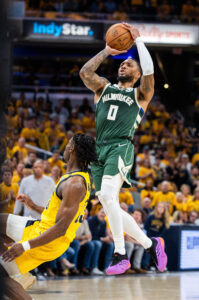

 The Pelicans didn’t entirely avoid health issues in ’23/24, but they came about as close as they could realistically expect, with Williamson, Ingram, and McCollum each playing between 64 and 70 regular season games. A late-season knee injury limited Ingram’s effectiveness in the playoffs, and Williamson hurt his hamstring in the play-in tournament, sidelining him for the first-round series vs. the Thunder, but by that point, the Pelicans had gotten the extended evaluation period they’d hoped for, giving them a better idea of what they had.
The Pelicans didn’t entirely avoid health issues in ’23/24, but they came about as close as they could realistically expect, with Williamson, Ingram, and McCollum each playing between 64 and 70 regular season games. A late-season knee injury limited Ingram’s effectiveness in the playoffs, and Williamson hurt his hamstring in the play-in tournament, sidelining him for the first-round series vs. the Thunder, but by that point, the Pelicans had gotten the extended evaluation period they’d hoped for, giving them a better idea of what they had.
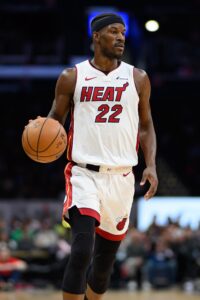 The most pressing question facing the Heat this summer is whether or not Butler will still be on the roster on opening night. A breakup would be a bit of a surprise, given that the past five years have seemed like a near-perfect marriage between one of the NBA’s most competitive stars and a franchise that prides itself on its hard-working culture.
The most pressing question facing the Heat this summer is whether or not Butler will still be on the roster on opening night. A breakup would be a bit of a surprise, given that the past five years have seemed like a near-perfect marriage between one of the NBA’s most competitive stars and a franchise that prides itself on its hard-working culture.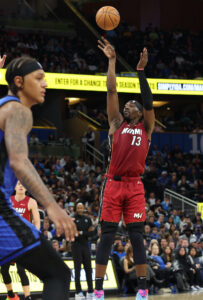
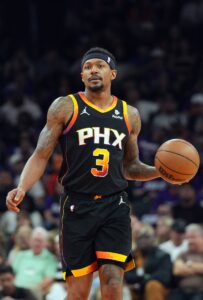 The moves left Phoenix with a top-heavy roster headed by three players who will earn a combined $150MM+ in 2024/25 when
The moves left Phoenix with a top-heavy roster headed by three players who will earn a combined $150MM+ in 2024/25 when 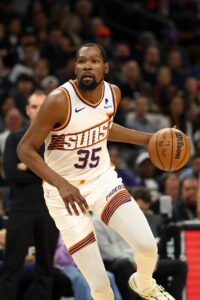
 Taking into account Embiid’s salary, Maxey’s cap hold, the cap hold for the No. 16 overall pick, and rookie-minimum cap holds for nine empty roster spots, the Sixers could generate up to about $62MM in cap room. That figure, which would rely on renouncing all the team’s current free agents and waiving players on non-guaranteed salaries (including
Taking into account Embiid’s salary, Maxey’s cap hold, the cap hold for the No. 16 overall pick, and rookie-minimum cap holds for nine empty roster spots, the Sixers could generate up to about $62MM in cap room. That figure, which would rely on renouncing all the team’s current free agents and waiving players on non-guaranteed salaries (including 
 The Kings took care of one of the most important items on their offseason to-do list a week ago, reaching an agreement on a
The Kings took care of one of the most important items on their offseason to-do list a week ago, reaching an agreement on a 
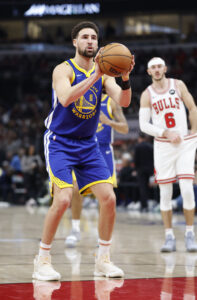 If money continues to be no object for the Warriors, re-signing veteran sharpshooter
If money continues to be no object for the Warriors, re-signing veteran sharpshooter 